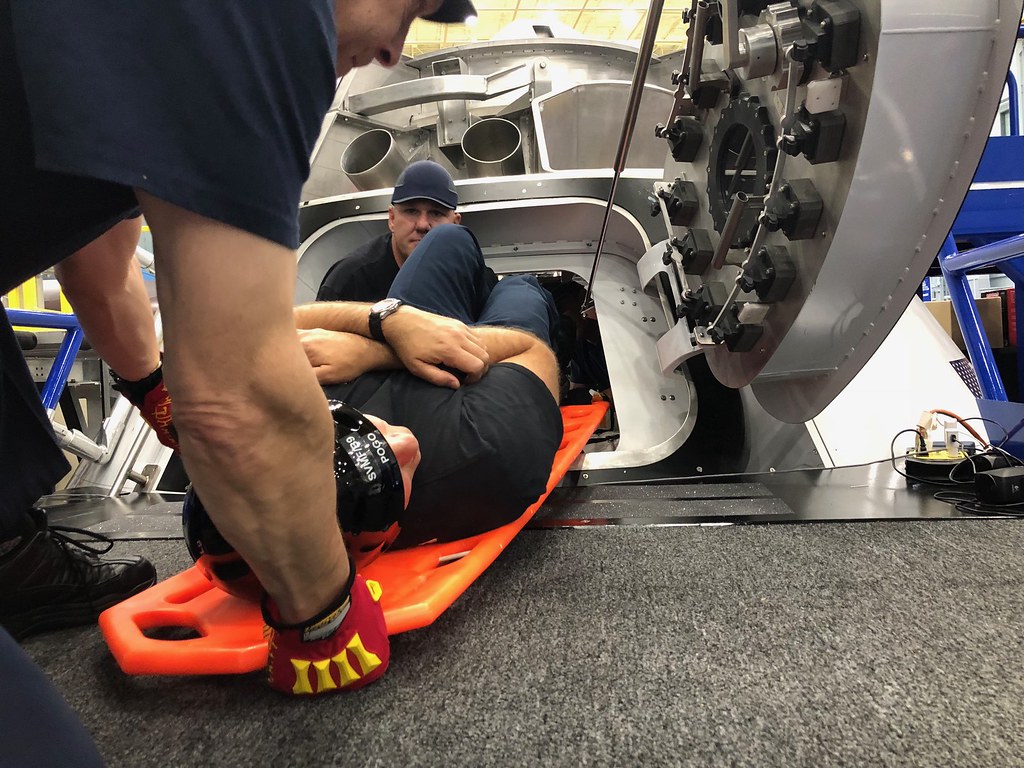
Confined Space Safety: Understanding the Risks and Implementing Best Practices
Introduction
Confined Space Safety : Confined spaces present unique challenges and hazards, making them one of the most dangerous environments in various industries. Lack of awareness and inadequate safety measures can lead to life-threatening situations for workers and rescuers. In this article, we will delve into the importance of confined space safety, the potential risks associated with such spaces, and essential practices to ensure the well-being of workers and prevent accidents.
What Defines a Confined Space?
A confined space is an enclosed area with limited entry and exit points. It is not intended for continuous occupancy but may require occasional human entry for maintenance, inspection, or other tasks. Confined spaces vary widely and can include storage tanks, underground vaults, pipelines, silos, sewers, and more.
The Dangers of Confined Spaces
Working in confined spaces can expose individuals to various life-threatening risks. Some of the dangers include:
- Limited Entry and Exit Points: In case of an emergency, it becomes challenging to exit quickly, leading to potential entrapment.
- Hazardous Atmospheres: Accumulation of toxic gases, lack of oxygen, or the presence of flammable substances can result in asphyxiation, poisoning, or explosions.
- Engulfment Hazards: Workers may face the risk of being engulfed by loose materials like sand, grain, or liquids, causing suffocation.
- Temperature Extremes: Confined spaces can experience extreme temperatures, leading to heat stress or hypothermia.
Understanding Confined Space Regulations
Recognizing the inherent risks of confined spaces, many regulatory bodies have established guidelines to enhance worker safety. For instance, in the United States, the Occupational Safety and Health Administration (OSHA) mandates employers to follow specific confined space entry standards (29 CFR 1910.146) to protect workers.
Key Elements of a Confined Space Safety Program
To ensure comprehensive safety in confined spaces, organizations must implement a robust safety program that includes the following key elements:
5.1 Identifying and Evaluating Confined Spaces
The initial step in creating a safety program is to identify all potential confined spaces in the workplace. Conducting thorough evaluations of these spaces helps in understanding the associated hazards and developing appropriate safety protocols.
5.2 Developing and Implementing Safety Protocols
Employers must establish clear and detailed safety protocols for confined space entry and operations. These protocols should outline the necessary steps to be taken before, during, and after entry, as well as the equipment and protective measures required.
5.3 Proper Training and Equipment
Workers involved in confined space activities should undergo comprehensive training to recognize potential hazards and learn how to use safety equipment effectively. This training should include emergency procedures and rescue operations.
5.4 Regular Monitoring and Maintenance
Monitoring confined spaces regularly is crucial to identify changes in atmospheric conditions or potential hazards. Additionally, regular maintenance of equipment ensures that safety devices function as intended.
5.5 Emergency Preparedness
A well-prepared emergency plan is essential to deal with any unexpected incidents inside confined spaces. This plan should include rescue procedures, communication systems, and ways to summon help quickly.
The Role of Employers and Employees in Safety Compliance
Ensuring confined space safety requires active participation from both employers and employees.
6.1 Employer Responsibilities
Employers must:
- Provide proper training and resources to employees working in confined spaces.
- Develop and enforce safety policies and procedures.
- Conduct regular inspections and risk assessments.
- Maintain safety equipment in good working condition.
- Have a robust emergency response plan.
6.2 Employee Responsibilities
Employees must:
- Attend safety training sessions and follow safety protocols.
- Use provided safety equipment and personal protective gear.
- Report any potential hazards or unsafe conditions to supervisors.
- Be aware of emergency procedures and rescue methods.
Common Hazards in Confined Spaces
When preparing for work in confined spaces, it is crucial to be aware of the following common hazards:
7.1 Lack of Oxygen
Many confined spaces have limited ventilation, leading to oxygen-deficient atmospheres. This can cause dizziness, loss of consciousness, and even death.
7.2 Toxic Atmospheres
The buildup of toxic gases or vapors in confined spaces can pose severe health risks to workers.
7.3 Fire and Explosion Risks
Flammable substances in confined spaces can lead to explosions or fires, endangering workers’ lives.
7.4 Engulfment Hazards
Loose materials, such as grains or liquids, can engulf workers, causing suffocation.
7.5 Physical Hazards
Confined spaces may contain mechanical or electrical hazards that can injure workers.
Safety Equipment for Confined Spaces
To mitigate the risks associated with confined spaces, specialized safety equipment is essential:
8.1 Personal Protective Equipment (PPE)
PPE, including helmets, gloves, protective clothing, and safety harnesses, helps safeguard workers from potential hazards.
8.2 Gas Detectors and Monitors
Gas detectors and monitors continuously analyze the atmosphere for toxic gases, alerting workers to potential dangers.
8.3 Ventilation Systems
Proper ventilation systems help maintain safe atmospheric conditions within confined spaces.
Preparing for Confined Space Entry
Before entering a confined space, thorough preparation is crucial to ensure safety:
9.1 Entry Permits and Procedures
Before any confined space entry, obtaining an entry permit is a critical step. This permit, issued by the competent authority, ensures that all necessary safety measures have been taken. The permit outlines the specific tasks to be performed, the duration of the entry, and the safety precautions required.
Procedures for confined space entry involve a series of checks and validations. The team responsible for the entry should conduct a thorough assessment of the space and its potential hazards. They must confirm that the atmosphere is safe for human entry and that the necessary safety equipment is available and functional.
9.2 Pre-Entry Testing
Pre-entry testing is essential to evaluate the atmospheric conditions inside the confined space. This testing involves measuring oxygen levels, checking for toxic gases, and detecting potential flammable substances. Only after confirming that the air is breathable and free from hazardous materials can workers proceed with their tasks.
9.3 Isolation and Lockout/Tagout
Before entry, it’s crucial to isolate the confined space from any external sources that could introduce hazardous substances or energies. Lockout/tagout procedures should be implemented to ensure that all machinery and equipment are safely shut down and cannot be inadvertently restarted during the entry process.
9.4 Communication and Monitoring Systems
Maintaining constant communication with workers inside the confined space is vital. Two-way radios or other communication devices allow for immediate updates on any changes in conditions or emergencies. Monitoring systems outside the space should continuously track atmospheric conditions to respond promptly to any deviations from the safe range.
Steps for Safe Confined Space Entry
While each confined space may present unique challenges, following these fundamental steps can significantly enhance safety:
10.1 Assessing the Entry Point
Before entry, thoroughly inspect the access point to ensure it is safe and suitable for entry. Check for any obstructions or hazards that may hinder the worker’s ability to enter or exit quickly.
10.2 Continuous Atmosphere Monitoring
Once inside the confined space, continuous atmosphere monitoring is essential. Gas detectors and atmospheric monitors should be utilized to track oxygen levels, gas concentrations, and any potential changes in the atmosphere.
10.3 Emergency Rescue Plan
Always have a well-defined emergency rescue plan in place. This plan should include procedures for rapid evacuation and the necessary equipment to extract workers safely in case of an emergency.
10.4 Training and Communication During Entry
Workers inside the confined space should remain in constant communication with those outside. Regular check-ins ensure that everyone is aware of the ongoing status and can respond quickly to any unexpected situations. Proper training also ensures that workers can adapt to changing conditions and respond effectively to emergencies.
Common Myths about Confined Spaces
Addressing misconceptions about confined spaces is crucial to promoting safety awareness:
- Myth: Confined spaces are not dangerous if entered briefly. Fact: Even short entries can be hazardous due to the potential for hazardous atmospheres or engulfment.
- Myth: Ventilation is not necessary for short entries. Fact: Proper ventilation is essential, regardless of entry duration, to ensure a safe atmosphere.
- Myth: Confined space training is unnecessary for experienced workers. Fact: All workers must undergo regular training to stay up-to-date with safety procedures and best practices.
- Myth: Gas detectors are not reliable and unnecessary. Fact: Gas detectors are crucial for detecting hazardous atmospheres and ensuring worker safety.
- Myth: Confined space safety is primarily the responsibility of the employer. Fact: All workers have a responsibility to follow safety protocols and communicate any concerns.
Conclusion
Confined space safety is of utmost importance in various industries, where workers may face life-threatening hazards. By recognizing the risks associated with confined spaces and implementing comprehensive safety programs, employers can protect their workers and prevent accidents. Regular training, proper equipment, and emergency preparedness are key elements in ensuring that workers can perform their tasks safely and return home unharmed.
FAQs
Q1: Can confined spaces be made safe for entry without a permit?
No, confined spaces should never be entered without an entry permit. The permit ensures that all necessary safety measures have been taken, and workers are adequately protected.
Q2: Are gas detectors required for every confined space entry?
Yes, gas detectors are essential for every confined space entry. They continuously monitor the atmosphere and provide early warnings if hazardous gases are present.
Q3: Who is responsible for ensuring confined space safety?
Both employers and employees share responsibility for confined space safety. Employers must provide proper training and safety measures, while employees must follow safety protocols and use provided equipment.
Q4: Can you enter a confined space alone?
It is highly discouraged to enter a confined space alone. Always have a team of trained personnel, including attendants and rescue personnel, present during confined space entry.
Q5: How often should confined space training be conducted?
Confined space training should be conducted regularly, ideally at least once a year, to ensure that workers stay informed about safety procedures and best practices.
























